#koh-i-noor diamond
Text

The Koh-i-Noor Diamond Curse
The Koh-i-Noor Diamond is a 186 carat diamond with a curse affecting only men. According to folklore, a Hindu description of the diamond warns that “he who owns this diamond will own the world, but will also know all its misfortunes. Only God or woman can wear it with impunity.”
Every prince who was in possession of the diamond would ultimately lose his power if not his life. For over 500 years the stone changed hands in gruesome battles and vicious coups. The Koh-i-Noor is reportedly worth £500million and weighs a staggering 105.6 carats approximately 20 grams. It currently sits in the Tower of London on the late Queen Mother’s crown.
9 notes
·
View notes
Text

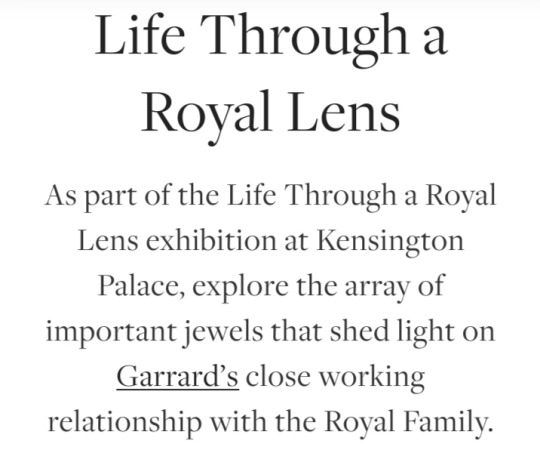
In her “accession” photographs, shot in 1952 by Dorothy Wilding, HM Queen Elizabeth II is pictured with the Girls of Great Britain and Ireland Tiara upon her head – a jewel that you might recognize because Her Majesty is seen wearing it on the front of every Bank of England banknote.
Originally the property of Queen Mary, Duchess of York, Princess of Wales and finally Queen Consort of King George V, the Girls of Great Britain and Ireland Tiara was crafted by Garrard in 1893 to be given as a wedding present from the Girls of Great Britain and Ireland committee.
Designed to be transformable, allowing it to be worn as either a necklace or coronet, over the years, Queen Mary requested that Garrard add diamonds, remove pearls, and separate the bandeau from the base so that she could wear it as a headband.
In 1947, Queen Mary gave the tiara to Princess Elizabeth as a wedding present. In 1969, now Queen Elizabeth II, she asked for the bandeau and tiara to be reunited, as it remains today.
Worn frequently by Her Late Majesty The Queen, the Girls of Great Britain and Ireland Tiara is an ongoing source of inspiration for Garrard’s designers, with the repeated pattern of diamonds encircling the base reflected in the round and geometric Windsor motif, which is a signature of the Albemarle and Fanfare jewellery collections.

The Queen’s love of brooches is legendary, and in Bob Thomas’ intimate portrait of Her Majesty at the Royal Windsor Horse Show, she is pictured wearing the Cullinan V Heart Brooch, one of several important brooches commissioned from Garrard by the Royal Family.
Showcasing the 18.80-carat heart shape Cullinan V diamond, the fifth-largest gem to be cut from the 3,106-carat Cullinan Diamond – the largest gem-quality rough diamond ever discovered – the diamond was given to Queen Mary in 1911 as a gift from the South African government.
It was originally worn by Queen Mary as part of the suite of jewellery made by Garrard for her to wear at the Delhi Durbar in 1911.
When Queen Mary died in 1953, the Cullinan V Brooch was passed to her granddaughter, Her Late Majesty Queen Elizabeth II, who was photographed wearing it throughout her reign.

The Sapphire and Diamond cluster ring worn by Catherine, Princess of Wales, formerly Duchess of Cambridge, in the 2013 portrait by her father Michael Middleton is among Garrard’s best-known creations.
Set with a magnificent 12-carat oval Ceylon sapphire, encircled by a cluster of diamonds set in 18 carat white gold, the ring was personally chosen by Lady Diana Spencer for her engagement to Prince Charles.
It became instantly famous after it was prominently showcased in an engagement shoot in 1981 that took place in the grounds of Buckingham Palace.
A new chapter in the story of Princess Diana’s engagement ring was written when, in 2010, William, Prince of Wales, formerly Duke of Cambridge, chose to propose to Catherine Middleton with the same engagement ring his father had given to Diana.
As this royal jewel, passed down through generations, takes on new meaning and sentiment upon Princess of Wales’ hand, we continue to honour this history-defining design in the 1735 collection.
Garrard’s iconic cluster setting also features prominently in the Jewelled Vault, where each one-of-a-kind creation is designed around an exceptional central stone.

A page from the scrapbook of Princess Victoria of Wales, daughter of King Edward VII and Queen Alexandra, shows photographs of Alexandra, dating from 1901, wearing a diamond crown that is much smaller than a traditional royal crown.
Crafted by Garrard in 1871 at the request of Queen Victoria, the miniature crown was designed to be worn over Queen Victoria widow’s cap.
Set with more than 1,000 diamonds and featuring alternating crosses and fleur-de-lis motifs, Garrard created the crown so that the arches could be removed.
Queen Victoria wore the Small Diamond Crown for the first time at the opening of Parliament in 1871 and frequently thereafter for state occasions.
After Queen Victoria’s death, the crown was worn by Queen Alexandra, who in turn passed it to her daughter-in-law, Queen Mary.
Today, Queen Victoria’s Small Diamond Crown is housed at the Jewel House at the Tower of London, where it is on display.
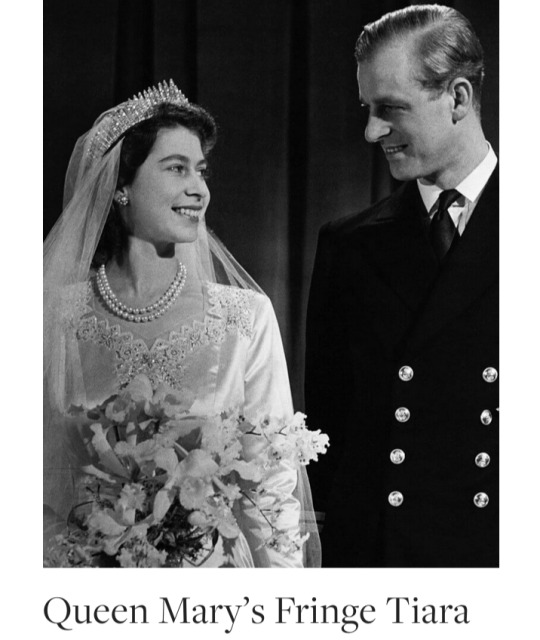
Both King George VI and HM The Queen are pictured wearing the Imperial State Crown in the Life Through a Royal Lens exhibition.
The 10th iteration of this historic jewel, the crown was crafted by Garrard in 1937 for King George VI and adjusted for The Queen ahead of her coronation in 1953.
Some of the most historic gems in the royal collection reside in this Crown Jewel, including, at the front of the crown, the Cullinan II, the second largest diamond cut from the 3,106-carat Cullinan Diamond – the largest gem-quality rough diamond ever discovered.
Above it, mounted on a diamond Maltese cross, is the Black Prince Ruby, which is not a ruby at all.
In the 16th century, it was discovered that this blood-red semi-polished stone is, in fact, a spinel, a gem that is often referred to as “the great imposter” after it was discovered that some of the most famous “rubies” seen in crown jewels around the world are, indeed, spinels.

A big moment in Garrard’s history was the recutting of the Koh-i-Noor Diamond.
This sizeable white diamond was first displayed to the public at the Great Exhibition of 1851.
In 1852, Prince Albert, who was instrumental in the creation of the Exhibition, commission Garrard to recut the diamond.
The intensely demanding cutting process lasted eight weeks and was overseen by The Duke of Wellington.
Garrard worked to create more facets to enhance its beauty; consequently, the diamond emerged as a dazzling brilliant weighing 105.6 carats.
In 1911, the Koh-i-Noor was set into Queen Mary’s Crown, newly created by Garrard for the Coronation.
Today, the fabled Koh-i-Noor Diamond (which is now only worn by a woman – if a man wears it, he will supposedly be cursed) is set at the centre of The Queen Mother’s Crown created by Garrard in 1937.

In a black-and-white photograph taken at the Delhi Durbar in 1911, held to mark the coronation of King George V and Queen Mary as Emperor and Empress of India, Queen Mary is pictured wearing the magnificent Delhi Durbar Suite.
Created by Garrard at the request of the Queen, who wanted a suite of jewels that perfectly captured the majesty of the occasion, the suite included an emerald and diamond tiara, earrings, a brooch, a stomacher, and a spectacular necklace.
Designed by Garrard in a striking circlet style, the Delhi Durbar necklace is set with eight large cabochon emeralds known collectively as the Cambridge Emeralds, with a pendant suspended beneath set with a ninth Cambridge Emerald.
In 1912, Garrard made slight alterations to the necklace, making the emerald pendant detachable and adding a second removable pendant showcasing the 8.80-carat marquise cut Cullinan VII diamond.
Queen Mary regularly wore the necklace and the other jewels in the parure for the rest of her life, after which they became the property of Her Late Majesty Queen Elizabeth II, who inherited the Delhi Durbar Necklace in 1953 and had worn it on many occasions.
The Delhi Durbar Tiara, meanwhile, was given by Her Late Majesty The Queen to Camilla, Queen Consort, after her marriage to His Majesty King Charles III.

Commissioned by Queen Mary in 1919, the Fringe Tiara was crafted by Garrard in the fashionable Russian style reminiscent of a kokoshnik and designed to be convertible so that it could be worn as either a tiara or a necklace.
Queen Mary gave the tiara to her daughter-in-law, Queen Elizabeth, later the Queen Mother, who was pictured wearing it in Cecil Beaton’s whimsical portrait.
Queen Elizabeth in turn loaned it to her daughter, Her Late Majesty Queen Elizabeth II, then Princess Elizabeth, to wear for her wedding to Philip Mountbatten in 1947 as her “something borrowed.”
In 1974, the Queen Mother loaned the Fringe tiara for another royal wedding, that of her granddaughter Princess Anne.
Most recently, it was worn by Princess Beatrice on the occasion of her wedding to Edoardo Mapelli Mozzi in 2020.

Originally created by Garrard in 1870 for Florence, Lady Poltimore, the 2nd Baron of Poltimore, the Poltimore Tiara was not publicly known until it was acquired by Princess Margaret prior to her engagement to Antony Armstrong-Jones in 1959.
Featuring elegant diamond scrolls evocative of flora – an enduring source of inspiration during the Victorian era in which it was made – it quickly became one of the Princess’s most prized possessions.
In the ensuing years, both Margaret and the towering jewel were regularly in the spotlight, including, most famously, the photograph on show as part of the Life Through a Royal Lens exhibition featuring the Princess wearing the Poltimore Tiara in the bathtub.
#Queen Elizabeth II#HM Queen Elizabeth II#Girls of Great Britain and Ireland Tiara#King George V#Queen Mary#Cullinan V Heart Brooch#Sapphire and Diamond Cluster Engagement Ring#Lady Diana Spencer#Diana Princess of Wales#Catherine Middleton#Catherine Princess of Wales#Queen Victoria#Prince Albert#Small Diamond Crown#Queen Alexandra#Imperial State Crown#Cullinan II#Black Prince Ruby#Koh-i-Noor Diamond#Great Exhibition of 1851#Delhi Durbar Suite#Cambridge Emeralds#Cullinan VII#Delhi Durbar Tiara#Fringe Tiara#Poltimore Tiara#Princess Margaret#British Royal Family#Dorothy Wilding#Tower of London
53 notes
·
View notes
Text
Maharaja Duleep Singh (4 September 1838 – 22 October 1893)

A young Maharaja Duleep Singh.
Maharaja Duleep Singh (4 September 1838 – 22 October 1893), was born in Lahore in 1838. He was the youngest son of the legendary Maharaja Ranjit Singh, the Lion of Punjab, Duleep Singh ascended to the Gaddi of Lahore in 1843. This period also saw the once impenetrable Punjab annexed by the British East India Company.
Promptly de-throning the young Maharaja, the Company was determined to cut him off from his now erstwhile subjects to curb any chance of a rally of support to re-instate him. He was removed from Punjab by British authorities, sequestered to the Hill Station of Mussoorie, followed by his de facto exile to England.
In 1849 at the age of 10, he was removed from the Punjab with his title and power devolved. The Koh-i-Noor Diamond, part of his inheritance, was surrendered to Queen Victoria.

Queen Victoria wearing the Koh-i-noor as a brooch
He was subsequently kidnapped by the British Crown, and thereafter exiled to Britain at age 15 where he was befriended by Queen Victoria, who is reported to have written of the Punjabi Maharaja: "Those eyes and those teeth are too beautiful".
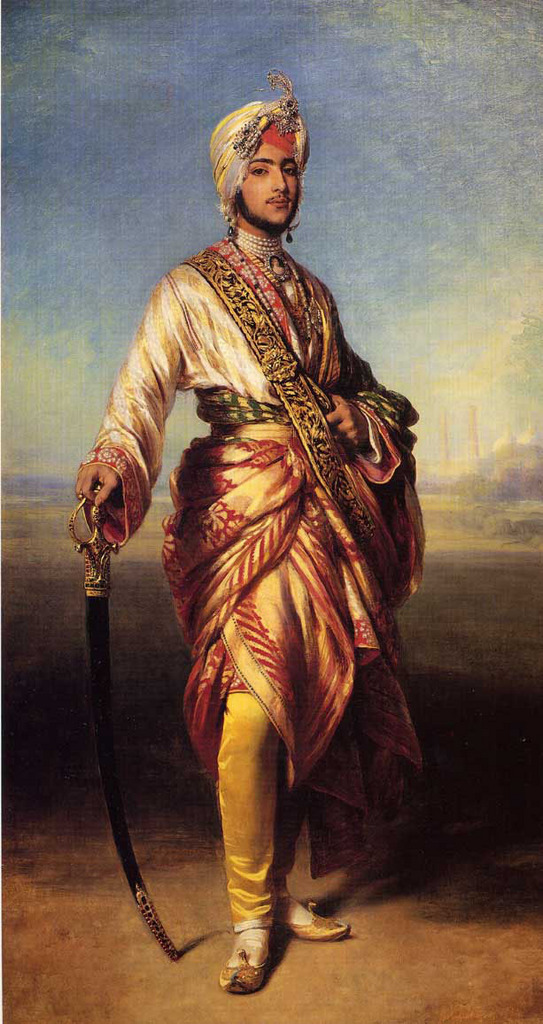
Duleep Singh (1838–1893) in 1854; portrait by Franz Xaver Winterhalter
Duleep Singh became known for his extravagant lifestyle, enjoying the countryside and game-shooting in particular. Duleep Singh also rebuilt the church, cottages and school in Elveden. Despite his lifestyle in Britain, he decided to fight to reclaim his land and title in the Punjab.

Duleep Singh photographed by Dr. Ernst Becker in 1854 on the lower terrace at Osborne House
In 1886 he returned to India where he re-converted to Sikhism. He went to live in Paris where he enlisted the help of Irish revolutionaries and the Russians to lead a revolt against the British in the Punjab but he was ultimately unsuccessful in bringing these plans to fruition.
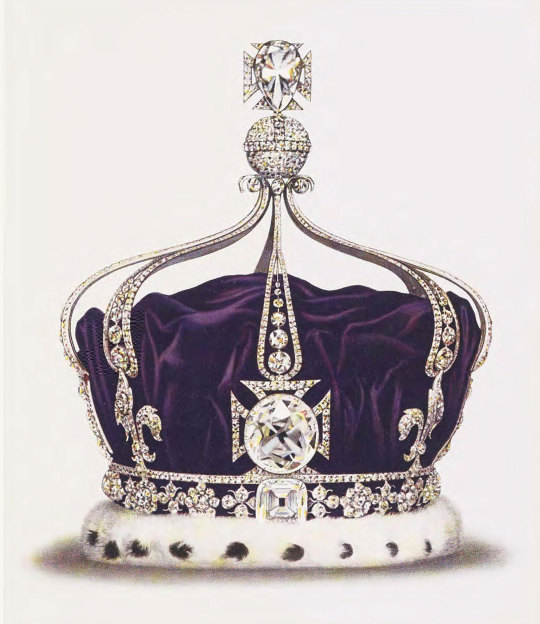
The Koh-i-noor diamond (which may have been referred to in Mesopotamian texts dating to 3200 bce) mounted in the centre of the cross pattée on the Queen Elizabeth the Queen Mother's Crown.
#the royal diaries#queen victoria#Victoria: May Blossom of Britannia#maharaja duleep singh#history of india#koh-i-noor diamond#british colonialism#british imperialism
9 notes
·
View notes
Text
Excerpt " “The transition is startling when the diamond becomes a symbol of potency rather than beauty,” Anand says. “It becomes this gemstone like the ring in Lord of the Rings, one ring to rule them all.”
For the British, that symbol of prestige and power was irresistible. If they could own the jewel of India as well as the country itself, it would symbolize their power and colonial superiority. It was a diamond worth fighting and killing for, now more than ever. When the British learned of Ranjit Singh’s death in 1839, and his plan to give the diamond and other jewels to a sect of Hindu priests, the British press exploded in outrage."
#colonialism#india#britain#Koh-i-Noor diamond#ko i noor diamond#koinoor diamond#diamond#monarchy#royal jewels
0 notes
Text
Morgoth Imageboard/Moodboard
(Again, technically for Angbang week but didn’t fit any prompts)

I am Melkor, the Elder King
who was before the world, and made it
#morgoth#melkor#angbang#silmarillion#I’m especially proud of the iron crown manip#fyi all three silmarills are just the koh-i-noor diamond with a bunch of filters added#the part of the most famous stolen gems in fiction shall be played by the most famous stolen gemstone in the world#ps I know those look like bird talons but they’re actually monitor lizard claws let’s just pretend it’s a dragon okay
36 notes
·
View notes
Text
Guys, I'm not saying we should be looking at the Koh-i-Noor curse for all the shit going down in the royal family right now, but that diamond is in Charles crown and ever since he became king, shit has been wrong in that family...
#context: if no one knows one of the diamonds in charles crown is the koh-i-noor diamond#and legend says it is very fucking cursed#like cursed to the point it has seen empires go down as soon as and get this#male rulers have it on them#female rulers dont seem to be effected in comparison#which is probably why elizabeth didnt get effected#but charles and even william to extent dont seem to be having fun right now#no wonder harry and meghan are staying in america#they avoiding curse here
4 notes
·
View notes
Photo
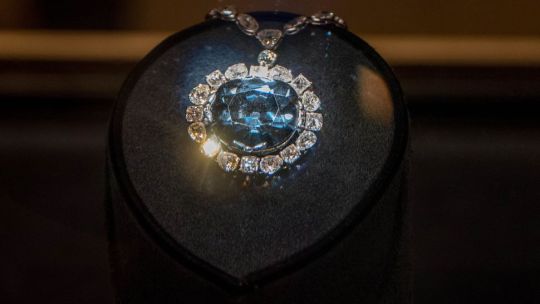
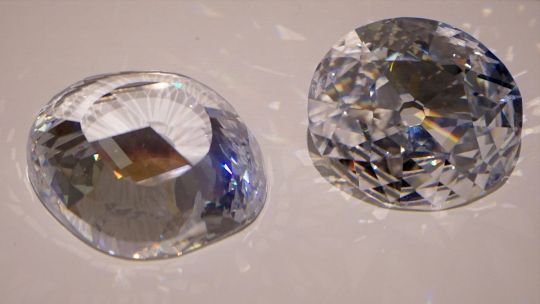
Scientists may have pinpointed the true origin of the Hope Diamond and other pristine gemstones | Live Science
Researchers suggest that the famed Golconda diamonds, including the Hope Diamond and Koh-i-noor, may have originated from a volcanic outcrop nearly 200 miles from where they were mined
2 notes
·
View notes
Text





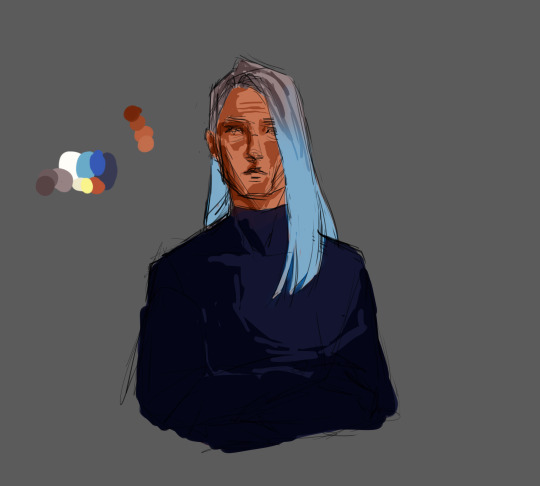


#mine#my ocs#personal#god it feels so good to finish this#koh i noor#diamond koh i noor#excelsior#diamond excelsior#my own ocs#i missed these bitches#gem people#diamond people#diamonds#diamond#art#digital art#glowing hair#golden eye
6 notes
·
View notes
Video
undefined
tumblr
Koh-i-Noor
https://en.wikipedia.org/wiki/Koh-i-Noor
https://www.in2013dollars.com/uk/inflation/1850?amount=186000
#Tiktok#Koh-i-Noor#generational wealth#colonization#colonialism#diamond#history#British Museum#british monarchy#british royal family#british imperialism#imperialism#muesum
18 notes
·
View notes
Text
Tacky old man wears tacky old hat in a tacky show of wealth and colonial power while spending a truly obscene amount of money to try to make up for the fact that he wasn’t hugged as a child: more at eleven
#brf#my take on the coronation#seriously who on earth likes these people#I used to and guess what it’s FUCKING EMBARRASSING#king chuck can go fuck himself as far as I’m concerned#give the koh i noor diamond back u cowards#I’ll give them this: Kate’s headpiece is extremely pretty#but this entire thing is tacky#and they’re arresting protesters????? what the ACTUAL FUCK Britain#seriously though why should anyone want to celebrate a grown man who has never done laundry or cleaned a bathroom in his entire life
6 notes
·
View notes
Text


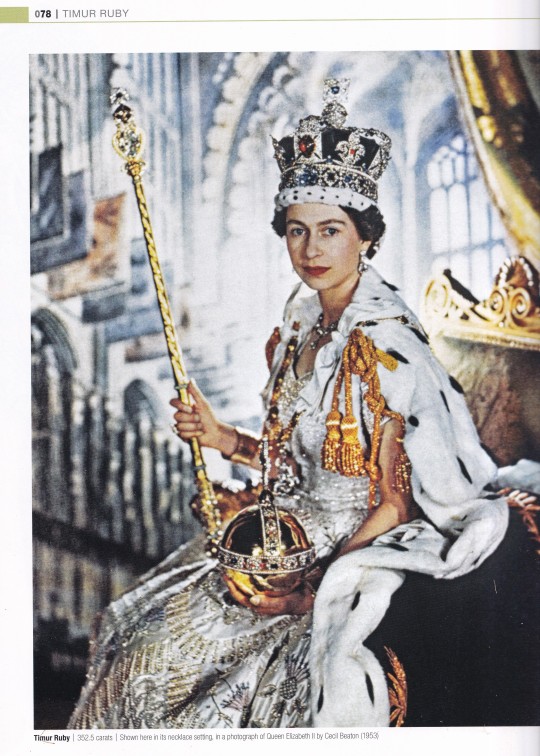





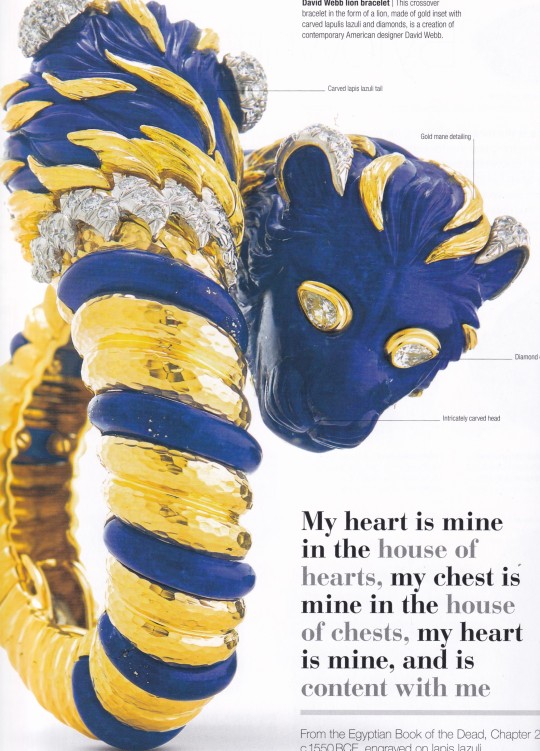



Jewel
A Celebration of Earth's Treasures
Foreword by Judith Miller
Dorling Kindersley, London 2016, 360 pages, 26,2x30,5cm, ISBN 9780241226032
euro 35,00
email if you want to buy [email protected]
Celebrate the world's most dazzling jewels and gemstones with this glamorous guide to jewellery, precious and semi-precious gems, and minerals.
Packed with spectacular photography of gemstones and celebrated jewellery and other precious objects, fascinating real-life stories about the world's most famous, celebrated, or notorious gems, and interesting historical features about the history of gemmology, Jewel is a lavish look at precious stones, precious metals, and organic gems such as amber and pearl.
Discover gemstones from agate to zoisite, take an up-close look at the world's most extravagant and famous jewellery, and immerse yourself in the incredible stories behind famous gems including the stunning Koh-i-Noor, the exquisite Fabergé eggs, and the mysterious and allegedly cursed Hope Diamond.
With a foreword by Judith Miller, this sumptuous celebration of the treasures of the Earth is the perfect gift for anyone looking for a little glamour.
16/03/24
#jewels#gioielli#gemstones#precious stones#gems#amber#pearls#famous jewellery#Fabergé eggs#Hope Diamond#Koh-i-Noor#Judith Miller#fashion books#fashionbooksmilano
1 note
·
View note
Text
Called “cursed” by those whose lives have been plagued by misfortune since acquiring the stones, you would think this would make people averse to owning them, but quite the contrary!
#cursed#gemstones#diamond#koh i noor#India#Queen Victoria#Crown Jewels#Tower of London#anita anand#William Dalrymple#Shah Jahan#The peacock throne#Ahmad Shah Lahore#The Mughal Empire#Nader Shah#British East India Company#Ranjit Singh#Prince Albert#Duleep Singh#Treaty of Lahore
0 notes
Photo
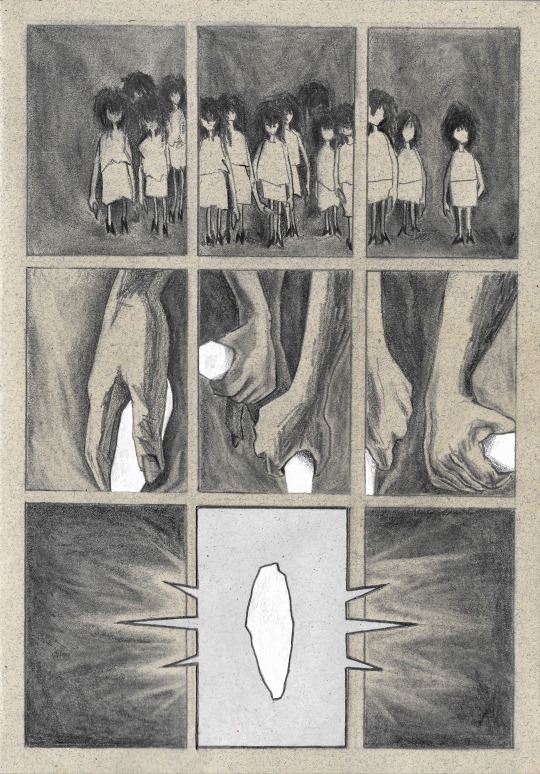
Witches / Mini Comic Story
#comics#comic#mini story#mini comic story#draw on paper#on paper#koh-i noor#diamond#women#witch#witches#illustration#comic book#comic story#mini öykü#drawing#dessinateur#framed#storyboard#abstract story#abstract#traditional technic
1 note
·
View note
Text

King Charles has been diagnosed with cancer.
Also see :
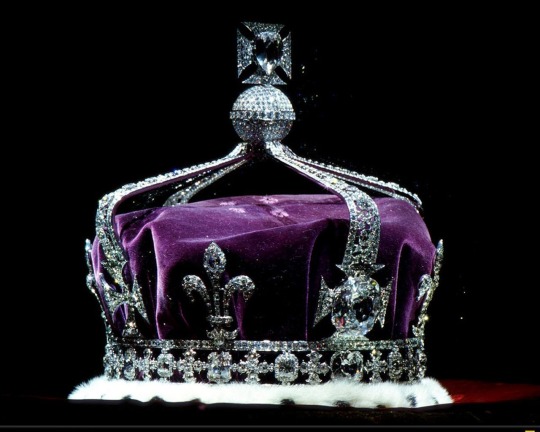
The Koh-i-Noor Diamond is a 186 carat diamond with a curse affecting only men. According to folklore, a Hindu description of the diamond warns that "he who owns this diamond will own the world, but will also know all its misfortunes. Only God or a woman can wear it with impunity."
Source (and is also a very well known story in India)
Currently, it is set as one of the jewels within a British monarchy crown that is kept at the Tower of London Jewel House.
Coincidence? I THINK NOT. Desis, it's Our Moment *flips hair*
#✨✨✨#desi#desiblr#king charles#british royal family#india#kohinoor#kohinoor diamond#jaate jaate keh gayi#cursed
683 notes
·
View notes
Text
The courting gift.
Thing: What about a diamond?
Wednesday: Don't be ridiculous Thing, Enid is worth more than any mere dia-
Thing: Oh no, i know that look.
Wednesday: Thing you are a genius.
Thing: ...This isn't going to end well.
1 Hour Later...
Wednesday: Enid, a family matter has arisen that i must attend to, I will be back by the end of the weekend.
Enid: Uh yeah sure, everything okay?
Wednesday: (Pause) Yes, it cannot wait. Don't wait up and if i shan't return, burn this school down and everyone inside.
Enid: Wow... you're such a psychopath! (Giggles)
Wednesday:
Wednesday: Flattery will... it won't... (Sigh) Los halagos no te llevarán a ninguna parte cuando ya me has capturado, en cuerpo, mente y alma.
Enid: (Smiling widely) I Love you too!
Wednesday: (Quietly) Do not jest with your words Mi loba.
Two Days Later...
Enid is stood in the common room of Ophelia Hall, watching the news with Yoko and Divinia.
News Presenter: ...We have some upsetting breaking news, The Tower of London was broken into last night where thieves took the Koh i noor, a diamond that was set in the crown of the Queen Mother. With an estimated value of Three Hundred Million Pounds, the jewel is said to be priceless. The Metropolitan Police in conjunction with Palace officials have confirmed that currently there are no suspects, this is without doubt one of the greatest heists in history, although authorities are baffled that only one item was taken.
Enid: Wow... what kind of person would steal from a dead woman's crown. (Shaking her head) Anyway laters, Wednesday is due back at any moment!
Yoko: (Grinning) Like a puppy eagerly awaiting their owners return at the door.
Enid: (Blushing) Shut up. Anyway i'll see you later!
Enid rushes up a flight of stairs, two steps at a time, a bounce in her step. She had missed Wednesday. She had missed her so much. She pushes open the door making Wednesday flinch.
Enid: Wends!
Wednesday: (Turning around sharply, hiding something behind her back) Mi loba.
Enid: (Narrowing her eyes.) What's behind your back?
Wednesday: ...Nothing.
Enid folds her arms with a pointed glare and tilt of her head.
Wednesday sighs, knowing she can't lie to Enid, not anymore, brings the item in front of her.
Enid: Wednesday... please tell me you have a really, really good reason for having the fucking Koh-i-noor in our dorm room???
Wednesday: (Weakly) I stole it for you. I planned to give it to you this coming full Moon. To court you.
Enid:
Enid: Wends... all you had to do was ask me out for a coffee or something, not commit the greatest heist in living history! (Tearily) But oh em gee, you did this? for me?
Wednesday: I would do anything for you, my fierce, fluorescent wolf.
Enid: (Preening and blushing) Oh my gosh... I'm going to have to get used to that huh?
Wednesday: (Striding forwards) As long as I breathe every breath will be spent making sure you never feel unloved ever again.
Enid: (Squeaking as Wednesday gets within several inches of Enid's face)
Enid: You...I...uh... you love me?
Thing:
Thing: Oh fer fuck sake, just propose already!
45 Mins later...
Thing: These lesbians, i can't anymore. They keep making googly eyes at each other from across the room and smiling, a hand can only stand to watch so much you know?
Weems: Wait... Wednesday AND Enid???
Thing: YES!
Weems: Wednesday smiling?
Thing: YES!
Weems: (Muttering) God help us all...
(The Koh-i-noor is never found)
#wenclair#this turned into quite the mini story#Wednesday would steal the greatest diamond in the world for Enid#prove me wrong#they're so gay
216 notes
·
View notes